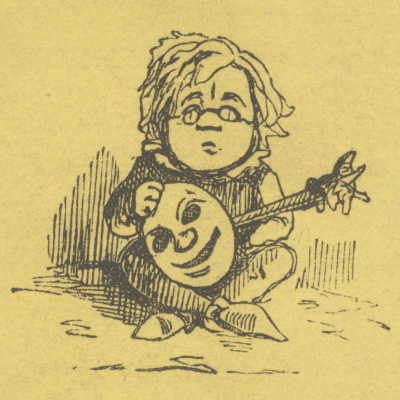Ralph Thomas Hotchkin Griffith was born to Reverend Robert C. Griffith and Mary E. Adderley in Corsley, Wiltshire on May 25, 1826. It was a remarkable age. Only three days earlier, the HMS Beagle had set sail from Plymouth on its first voyage. Waterloo was already a decade old memory. Queen Victoria was 7 years old. Charles Dickens was 14. Lord Byron was dead, Charles Babbage was designing the Difference Engine, and speculative fiction had drawn its first gasping breath in the Gothic womb of Mary Shelley’s Frankenstein. In distant India, a word that still denoted an area and not a place, one principality after another was falling to British might and British genius. It was the best of times to be an Englishman. As John Aylmer, Bishop of London, had presciently anticipated in An Harborowe, a year after the English navy crushed the Spanish Armada in 1588: “God is English.”
But conquest had brought with it the conqueror’s burden: administration. No empire has ever had enough qualified citizens to run two countries at the same time. Sooner or later, an empire has to start finding, training and hiring natives. Lord Macaulay’s Minute of 1834 spelled out what the goal should be:
…a class of persons, Indian in blood and colour, but English in taste, in opinions, in morals, and in intellect.
Or less politely, wogs. Coconuts. Salman Rushdie, in his The Moor’s Last Sigh, acknowledges this bitter fruit:
Bleddy Macaulay’s minutemen!… English-medium misfits… square-peg freaks.
Macaulay is reviled these days for his racism, but as I see it, he was only being consistent. Hadn’t the Roman empire been a good thing for Britain? Wasn’t Macaulay its living proof? Didn’t he belong to the class of persons, English in blood and color, but Roman in taste, in opinions, in morals, and in intellect? Besides, Macaulay and his carminative Minute were less influential than people suppose. What really got British education started in India was Sir Charles Wood’s Education Dispatch of 1854. It was well reasoned, pragmatic, free of hand-wringing, and based on an idea that would probably still work in places like Afghanistan. The idea was to leave Indian education mostly to the Indians, provide partial government funding, and set up some model educational institutions. In short: self-reliance, support and standards.
However, there was a severe shortage of British instructors. So that might explain why when Ralph T. H. Griffith joined the Indian Education Service in 1853, the twenty-seven year old Sanskrit scholar was almost immediately sentenced to be Professor of English Literature at the venerable Government Sanskrit College in Benares, India. Indeed, six months into the job, they made him headmaster of the associated school, and in 1861, the principal of the college itself. It was a position he was to hold for the next twenty-three years.
It was during this tenure that Griffith finished translating the first six books of Valmiki’s Ramayana from Sanskrit into English. The seventh and final book is a later addition to the canon (so is the first) and this he only abridged. The complete work appeared in 1870, published by E. J. Lazarus & Co. in Benares, and Trubner & Co in London. There had been an earlier effort in 1806 by the missionaries William Carey and Joshua Marshman, but they had only managed to translate the first two volumes. Thus, Griffith had produced the first complete English translation of Valmiki’s Ramayana. Translations are acts of courage. As Victor Hugo noted:
When you offer a translation to a nation, that nation will almost always look on the translation as an act of violence against itself.
Hugo was talking about native receptions to translated foreign works, but it applies equally well to native receptions to foreigners translating native works. In the literary magazines of the period, the Griffith Ramayana is often referred to as “a spirited translation,” a compliment to be sure, but for a horse, not a translation. It’s not insignificant that Voltaire mocked “spirited translators”:
…[their] spirit and ability consist in substituting a modern variety or peculiarity for an ancient one, to the utter confusion of all unity of time, place, and character; leaving the mind of the reader bewildered as in a masquerade, crowded and confused with ancient and modern costumes.
But Griffith’s achievement should not be underestimated. He’d had to translate some 24,000 slokas. A sloka is a Sanskrit verse and consists of thirty-two syllables, arranged either as a sixteen-syllable couplet or four eight-syllable hemistiches. The Iliad and Odyssey combined have some 27,000 lines, thus making the Ramayana roughly twice as long. Furthermore, a Sanskrit verse can be as gnarly as a one-liner Perl hack. It’s a language that takes a coder’s pride in Oulipo-type exercises. Gorresio‘s Italian translation (1850) and August von Schlegel‘s German translation (1829) could and did act as guides, but when it came to translating the slokas to English, Griffith was on his own.
So how does his work fare? if we think of it as Griffith’s Ramayana, then the work is not much of a success. It is merely an adequate translation of Valmiki’s Ramayana and a fine example of that curious Victorian animal: the past’s head joined to future’s butt. This is the animal that Voltaire mocked. But if we think of the text as the Griffith Ramayana, a member of the class of inspired Ramayanas, then it’s a marvelous thing indeed. Technically, the two texts are one and the same, but the difference in perceptions does makes a difference in our appreciation.
The Griffith Ramayana is a literary work, not a scholarly one. The wonderful Princeton translation (by Robert Goldman, Sally Sutherland Goldman, Sheldon Pollack and Barend van Nooten) is what a scholarly translation looks like. Scholarly works can get dated, literary works only go out of style. Scholars translate so as to ease their epistemological discomfort. Griffith translated so as to ease his aesthetic discomfort. Occasionally, Valmiki’s verses shows a bit too much leg for Griffith, and the translated verses therefore show too little. He also gets some things seriously wrong. For example, he has a section entitled “The Rape of Sita” when it should be “The Abduction of Sita.” What does Griffith say in anticipation of such bloopers? In the preface, he wrote:
My first object has been to reproduce the original poem as faithfully as circumstances permit me to do. For this purpose I have preferred verse to prose. The translations of the Iliad by Chapman and Worsley– nay, even by translators of far inferior poetical powers– are, I think, much more Homeric than any literal prose rendering can possibly be. In the latter we may find the ‘disjecti membra poetae,’ but all the form and the life are gone, for ‘the interpenetration of matter and manner constitute the very soul of poetry.’ I have but seldom allowed myself to amplify or to condense, or omit apparently needless repetitions, but have attempted rather to give the poet as he is than to represent him as European taste might prefer him to be. Comparisons, therefore, which to English readers will appear vulgar or rediculous [sic] have been left unaltered, and long passages of unutterable tediousness re-appear in my version with, probably, their tediousness enhanced.
Ignoring Griffith’s low opinion of his own work (not to mention the misreading of its essential nature), I completely agree with his decision to stick with verse. The few prose translations I’ve read lack the emotional savors of the original text. Unfortunately, Griffith decided to use iambic tetrameter, a distressing decision for those scarred by the memory of Gladys Hotchkiss belting out “Hernando’s Hideway.” I kept hearing an “Ole!” after every four lines. The manic insistence on rhyming also leads Griffith to make bad choices. For example:
On the bare earth the lady sank,
And trembling from their presence shrank
Like a strayed fawn, when night is dark,
And hungry wolves around her bark.
Barking wolves? Surely, it should be “howl”? But no, if rhyme needs wolves to bark, so they shall. Incidentally, in the original verse (at least in the Baroda Critical Edition of Valmiki’s Ramayana), a trembling Sita shrinks into herself (5.25.5: “s?t? vi?ant?v? ?gam? tmana?”), and not onto the bare earth. This would seem to be an error, but Sita is born of the Earth, so Griffith’s translation is correct with respect to myth and metaphor. A poet’s choice, of course, not a scholar’s.
Another problem with iambic tetrameter is pacing. Everything has to fit within the “da DUM da DUM da DUM da DUM” scheme, and there’s often a sense that a line could use an extra “da DUM.” Griffith remarks how he has no intention of chopping off a finger to improve the hand, but I wish he’d added a finger every so often. He also reveals a near-compulsive fondness for inversions and possessive nouns (“virtue’s brow,” “kingdom’s bound,” “ascetic’s weed’). After a while it can get on one’s nerves.
But there’s magnificence too. Consider this stanza which describes the death of Ravana at the hands of Lord Rama:
Upon his string the hero laid
An arrow, like a snake that hissed.
…
‘Twas feathered with the rushing wind;
The glowing sun and fire combined
To the keen point their splendour lent;
The shaft, ethereal element,
By Meru’s hill and Mandar, pride
of mountains, had its weight supplied.
He laid it on the twisted cord,
He turned the point at Lanka’s lord,
And swift the limb-dividing dart
Pierced the huge chest and cleft the heart,
And dead he fell upon the plain
Like Vritra by the Thunderer slain.
Compare the above with the following one, a description by Tennyson, also a rector’s son, of Mordred’s death at the hand of King Arthur:
…then Modred smote his liege
Hard on that helm which many a heathen sword
Had beaten thin; while Arthur at one blow
Striking the last stroke with Excalibur
Slew him, and all but slain himself, he fell.
I believe the comparison tilts in Griffith’s favor. Nor is this passage a unique instance. Read with an appreciative frame of mind, the work confirms what Anne Dacier (1647-1720) claimed in her preface to the Illiad: “a translation that tries above all to save the spirit, does not fail to keep the letter, even where it takes the greatest liberties.” Literary critics should take the Griffith Ramayana more seriously.
An Englishman went up a subcontinent and came down an Indian. Ralph Griffith, a lifelong bachelor, a rector’s son from Wiltshire, a harmless aglet on colonialism’s boot, managed to take an ancient Sanskrit love poem and make it his own. Unlike von Schlegel, he was able to avoid the contempt for the Other that so often accompanies familiarity. This is all the more remarkable considering that the Sepoy “Mutiny” of 1857 had drawn a permanent, and perhaps inevitable, line between conqueror and conquered. By the time Griffith was appointed director of public instruction of the North-west provinces in 1878, Charles Wood’s educational guidelines had become policy. But though policy was strong, the flesh was weak. Weather, loneliness, alcoholism, isolation, homesickness, low salaries, language problems, tropical diseases and, if I’ve judged the expressions of just-landed tourists correctly, sheer terror, all wrecked havoc on the men and women who were to implement the policy. However, Griffith seems to have thrived.
Upon retirement in 1885, Griffith moved in with his brother Frank’s family, and spent the next twenty-one years in the cool hills of Niligiri, translating the Vedas. Personally, I consider it a pity he didn’t spend the time on more literary texts. There were a great many other Sanskrit works left to translate– some three thousand years worth– but then again, there comes a time when every pen must be set down. At the age of eighty, some fifty years after he’d first arrived in India, never to return to England, Ralph T. H. Griffith died on November 7, 1906. Only a few weeks earlier, Mahatma Gandhi– then just Mohandas– had launched a non-violence movement in South Africa. In June, the Lusitania had set sail on its maiden voyage. Albert Einstein had published the theory of special relativity, solved the mystery of the photoelectric effect, provided a theoretical explanation for Brownian motion and demonstrated the equivalence of matter and energy. Hitler was 17 years old. In seven years time, Rabindranath Tagore would become the first non-European to win the Nobel Prize for literature. There were movies, heavier-than-air flight, phonographs and submarines. It would be a remarkable century. And Ralph T. H. Griffith, one of those suspended human bridges between Us and Them, between Now and Then, between Give and Take, had helped make it happen.
***
Acknowledgements:
Featured image from: IskonKL’s: Indigenous methods of preserving manuscripts.




Thank you for your critique of the Griffith translation. Can you suggest some better translations?
Hi Nikhil, I think the Ramayana still awaits its FitzGerald. In the meanwhile, check out the Arshia Sattar translation– that’s trustworthy.
I think you will find that the old use of the word “rape” allowed for kidnapping, i.e. “the rape of Proserpina”. It may be that Griffith wanted to draw a comparison between Sita’s kidnapping in Indian mythology to the kidnapping of Proserpina in Greek mythology.
Yes, I think you’re right. It’s probably similar to how “making love” used to mean paying romantic attention.